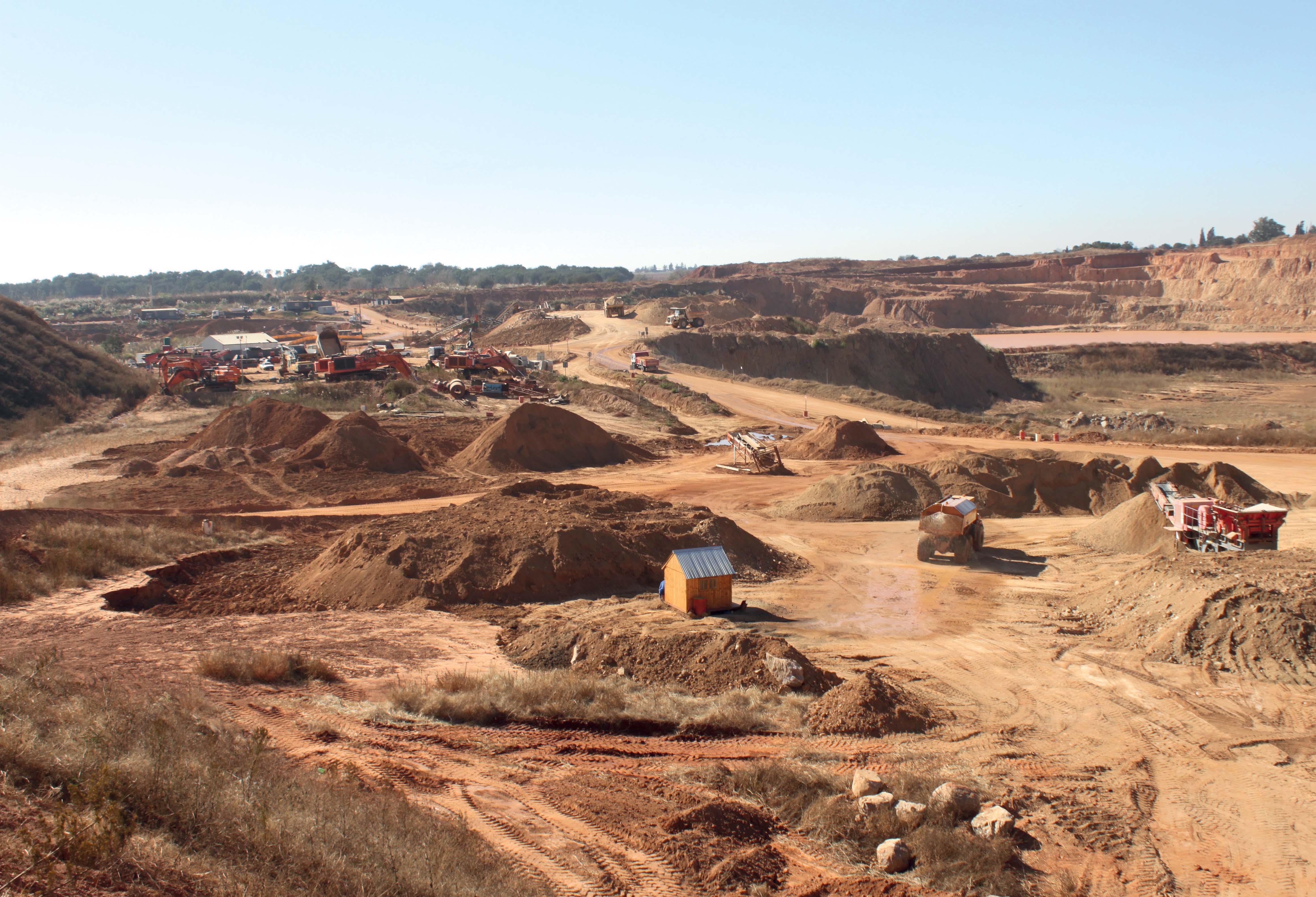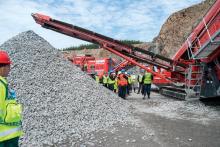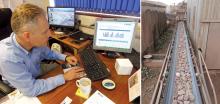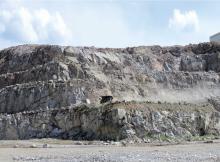
A South African sand quarry’s discovery of a decomposed granite rock that significantly adds to its product range, coupled with cost saving initiatives, is paying dividends in a market hit by squeezed margins, writes Munesu Shoko.
The South African construction sector has been in decline for the past few years, and statistics suggest that it is a tale of a struggling industry battling to get back on its feet following robust growth experienced during the build up to the 2010 FIFA World Cup between 2004 and 2009. Despite its stature as one of the most mature construction markets in sub-Sahara Africa, a protracted market recovery is taking a toll on both contractors and construction material suppliers’ bottom lines.
Against this backdrop, producers of construction aggregates are expressing tough trading conditions. For Crushco Quarry, one of the biggest sand producers in South Africa’s Gauteng province, diversification of its product range is the immediate answer to these economic woes. This has been made possible by the recent discovery of a generous face of severely fractured decomposed granite rock. Crushco is traditionally a producer of washed river sand, building sand and builder’s mix for the building industry. The discovery of granite rock has significantly added to the quarry’s product portfolio, allowing production of several G products including G5, G6 and G7 for the road construction sector.
Located in Bredel, Kempton Park, about 40km east of Johannesburg, Crushco Quarry, a subsidiary of Buildmax Aggregates and Quarries, has operated for the past 25 years and has an estimated 50-year mining resource. Crushco Quarry recently extended its size to incorporate an area endowed with approximately 10 to 15m of decomposed granite rock mined to a depth of 40m to reach an intermediate granite rock. This was achieved through free-dig excavation, with no need for drilling and blasting, according to Larry Kok, site manager at Crushco. The intermediate layer is being drilled and blasted to a depth of 10m. Drilling and blasting is undertaken once a month by contractor and sister company Diesel Power.
Below the 10m depth of the intermediate granite rock, the mining team has just discovered a vast reserve of solid granite rock that will further extend the quarry’s product range to include G1, G2 and G3 material for road construction purposes. Mining of the solid blue rock started on a large scale in January this year. A sizeable area has already been mined. Monthly production capacity stands at around 109,000tonnes/month.
Current product complement includes customary sand products comprising washed river sand, 3mm building sand, 4mm builder’s mix, as well as G5, G6 and G7 rock material. Product split is 31,750tonnes of washed river sand, 31,750tonnes of building sand, 13,600tonnes of builder’s mix, and 31,750tonnes/month of G5, G6 and G7 per month. This will soon be extended with G1, G2 and G3 aggregate, which is predicted to hit the 31,750tonnes/month mark within the first month of production.
As part of Crushco’s strategy to reduce costs and improve efficiencies, the quarry has just installed a new modular kinetic screening plant that is producing washed river sand, building sand and builder’s mix. It was supplied by Kinetic Engineering South Africa at a cost of around US$95,000. The plant is powered by a 24kVA generator. Its two 3kW motors mounted on a counter-balance produce enough energy to power heavy duty springs which in turn produce the kinetic energy. It comes with two conveyors powered by two 7kW motors.
Kobus Prinsloo, maintenance and production manager at Crushco, says the quarry plans to replace all mobile crushing and screening gear on site. He is not a fan of mobile crushers and screens, arguing that the cost of running these plants is “way costly”. He argues that, unlike crushing and screening contractors, a quarry does not necessarily need the flexibility of mobile plants. “You need lower operating costs and reliability, and that is achievable through running semi-fixed static plants,” he says.
Meanwhile, plans are at an advanced stage to invest in a full cycle static kinetic screening plant to produce both the G product and sand material in one pass. The plant will get rid of all mobile crushing and screening gear currently on site.
Crushco Quarry runs a fleet of six 45tonne
LOADING
2 x
1 x Cat 329 excavator
4 x Cat 966 front-end loaders
3 x Volvo front-end loaders (L120, L150 and L180)
HAULING
6 x Terex TR45 RDTs
CRUSHING
1 x
mobile jaw crusher
SCREENING
1x Terex Finlay 663
mobile screen
1 x modular kinetic
screening plant
1 x static screening plant
Many quarries in South Africa prefer running articulated dump trucks (ADTs), but Kok is of a different notion when it comes to the choice between an RDT and an ADT. He reasons that the choice between the two trucks depends on several considerations, but the important thing – key to growing the operation’s bottom line – is to pick the right solution, and apply it in the most productive manner.
Kok argues that for Crushco, the RDT has proven its worth over the ADT. He argues that where haul roads are kept at optimum condition, the RDT outperforms the ADT. “The upfront capital costs for the RDT and the ADT are the same, but if you bring the comparison down to cost per tonne, the RDT is more cost-efficient because of its size and speed,” says Kok.
“The RDT gives an ADT a hiding in terms of fuel efficiency,” he says. In Crushco’s experience, the RDT range is between 10% and 20% more fuel efficient than the ADT, primarily due to better speed and smaller wheels that give the truck better traction and the ability to quickly pick speed.
In operational costs, Kok also finds his RDT range less costly. He points out that, of the total operating costs of a truck, 70% goes to fuel, while 20% is directed to maintenance and 10% to the operator. Kok argues that if Crushco is saving between 10% and 20% on each truck, the total savings are enormous and worth sticking with the RDT range.
The full complement of the quarry’s fleet comprises
A Terex Finlay J1175 mobile jaw crusher is crushing the weathered rock material, and will soon be replaced by a full cycle static plant. The Terex Finlay 663 mobile screen plant is processing building sand. The two Cat excavators are employed at the decomposed rock face for free-dig applications, while the four Cat front-end loaders are feeding crushers and screens. The three Volvo loaders are loading customers’ trucks at stockpiles.
Compounding squeezed margins are some operational challenges on site. The pit easily accumulates water, and with the current torrential rains tormenting Johannesburg, a continual dewatering process is required. This has been addressed by pumping the water to three tailing dams, from where it is redirected to the sand washing plant.
Meanwhile, when Buildmax acquired Crushco, mining methods employed were said to be unsafe for its workforce of 40 working on site. The previous owner left high walls in the pit, which have been rectified by creating benches.









